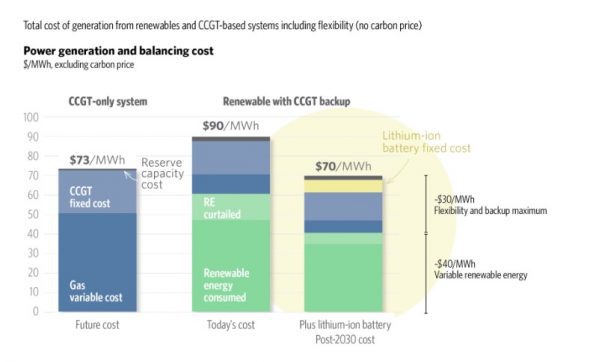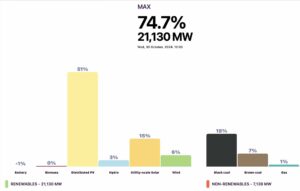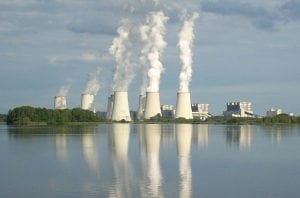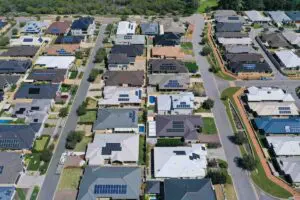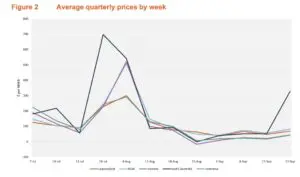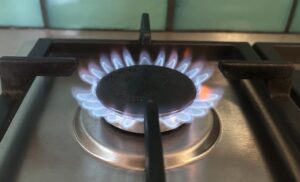The “coal versus no new coal” debate has come to define the battle lines over Australia’s energy future. It can basically be boiled down to one concept: the assumption that we have to rely on baseload power for the reliability and security of out electricity supply.
A new report from the US highlights how the concept of “baseload” is really just an artefact of an old industry, and points out that baseload should not be confused with reliability. The two do not go hand in hand, and hanging on to the term is getting in the way of planning for the future.
“Baseload power”, however, is a line encouraged by the fossil fuel industry, happy that “baseload” has become a marketing tool, in the same way that it has exploited the idea of “clean coal” and “energy poverty” to pursue their interests.
The Brattle Group report was commissioned by the NRDC, a US-based NGO, just as the Trump administration prepares its own battle over the future of “baseload” in a rapidly changing energy market. It prompted this series of tweets.
As in Australia, conservatives in the US are fighting back against renewables – and variable sources like wind and solar in particular – on the basis that baseload power should be protected at all costs.
It was the central theme of former prime minister and back-bench rabble-rouser Tony Abbott’s latest salvo into Coalition party politics, and his desire for the government to build a new coal-fired power station, under the fantasy that this will somehow reduce costs.(It will do the opposite).
He was followed by George Christensen, the Queensland MP wanting a baseload coal generator in the north of the state, to give people “power that they can rely on” and not have it derailed by “sacrifices to the climate gods”.
Christensen clearly did not read the Finkel Review, or the latest BNEF analysis, because he thinks coal is half the price of solar.
And it’s the line pushed by the Trump administration and its energy secretary Rick Perry. It’s a coal industry marketing point. But it’s a lousy argument that makes no sense in a world full of technology alternatives.
Increasingly, more energy regulators, such as the head of the UK’s National Grid, and other energy experts are accepting this point. Perry’s comments were slapped down almost immediately by one of the country’s senior energy regulator. “It is absolutely not true,” she said on Perry’s false claims on wind and solar.
And energy users are starting to come to this idea too. The best example is Nectar Farms, who were ready to abandon the building of the country’s biggest glasshouse for vegetable growing, and build it overseas, instead of western Victoria, before discovering that wind energy and battery storage could deliver the same reliability at a fraction of the cost of grid power and gas.
“Why would we do it any other way,” says the CEO Stephen Sasse. Extraordinary, this tale of a half a billion dollar investment, 1,300 jobs and 100 per cent renewables was completely ignored by the mainstream media. You’d think it would be a great story for prime minister Jobson Grothe.
And that explains the battle over baseload. The media runs with the coal industry talking point, it is infused in their discussions. How else could we deliver reliable energy, they ask.
Well, by using smarter, cleaner, faster and more reliable technology for one thing, would be the answer from the likes of AEMO boss Audrey Zibelman.
The new demand management recommendations coming from ARENA and the Institute of Sustainable Futures shows how these concepts like demand management can deliver the flexibility that the modern energy system needs, and save heaps on the cost of poles and wires.
The key point is that it is important to have enough power to meet demand at all times – but there are smarter ways of doing this than simply relying on large, inflexible generators – that just happen to be dirtier and more expensive than the alternatives.
The Brattle Report, like a similar analysis by the Climate Policy Initiative, and so many others before it, tries to puncture some of the myth-making around baseload.
Just because a coal generator is big, and can go for 24 hours uninterrupted, does not make it reliable.
To start with, the they can and do have unexplained outages, and the need for maintenance means that system planners have had to build in significant system upgrades, back-up and transmission infrastructure to spread generation over a larger region.
The planners also had to provide “contingency” management processes to avoid blackouts when one or more of these large power plants experienced unexpected outages. All the redundancy that critics say have to be built for wind and solar, have already been built for coal and gas.
Brattle points out events in Texas in 2011 when an unexpected cold snap forced 7GW of coal and gas-fired generation offline as equipment froze. Some 3GW of wind power was uninterrupted and helped keep the lights on.
Similarly, during the 2014 “Polar Vortex,” many coal and gas plants had difficulties generating power, as equipment froze and coal deliveries were stopped. Wind resources in the Midwest consistently produced power that helped to save electricity customers more than $US1 billion in two days.
In Australia, heat waves are having similar impacts. Reports into the various outages, load shedding and price spikes in Australia this past summer almost always point to the loss of capacity at coal and gas plants due to heat stress as the heart of the problem.
But still, to many people, the basic premise of the traditional utility planning processes developed over the last few decades remains unchanged today, despite the fact that wind and solar are killing coal on costs, and battery storage and other smart software has emerged to provide faster and more efficient controls, and do things that big coal-fired power stations could never do.
Brattle argues that system reliability is achieved through a mix of resources, not by any single unit. “There is no special need for continuous power supply to come from a single unit (when available and not on outage) rather than a mix of resources,” it notes.
“It is a misconception that “baseload” plants (or any plants, for that matter) are 100% reliable,” it says. “Coal and nuclear plants periodically go on outage, and when they do, their outages tend to be long.
“No generating plants operate 100% reliably in all hours of the year. All generators are prone to occasional unexpected outages and must regularly go offline for maintenance outages.
The report from CPI reached the same conclusion, affirming that baseload is an outdated term and that “reliability is a technology-neutral concept.”
“Electricity systems have always been managed ‘flexibly’,” it notes. “Weather, work patterns, industry, or even sports schedules create predictable or unexpected drops or spikes in demand.
“Sudden system failures, such as power station or transmission outages, mean that backup generation has always been required to keep the lights on. “
 If renewable generation and battery storage prices continue to fall in line with forecasts, meeting demand in each hour of a year with 80 per cent of electricity coming from wind and solar could cost as little as $US70/MWh – even when accounting for required short-term reserves, flexibility and backup generation.
If renewable generation and battery storage prices continue to fall in line with forecasts, meeting demand in each hour of a year with 80 per cent of electricity coming from wind and solar could cost as little as $US70/MWh – even when accounting for required short-term reserves, flexibility and backup generation.
In Australia, with even greater wind and solar resources, this is expected to be around the same price, but in Australian dollars. Either way, it is cheaper than what we have got now.
And the US modelling was done with cheap gas prices. Australia’s Finkel Review came up with a much higher number because it assumed that gas would be needed to replace coal, a highly contentious assumption that seems to perpetuate the “baseload” myth.
The CPI looked at grids and energy mixes in the US, India, Europe and Scandinavia.
“A lack of flexible capacity is often cited as a constraint on the amount of variable renewable energy we can add to the grid. But in our report, we found that most systems already have enough latent flexibility to meet over 30 per cent of their electricity demand from solar and wind.”
That is exactly the conclusion of the CSIRO, which points out that in Australia there is so much back-up already built into the grid, that anything less than 50 per cent wind and solar might be considered “trivial” in some areas.
And they both agree on the second point: “Moreover, technologies that exist today could support much higher shares of wind and solar; 80% or more.” That means little if any “baseload”. Reliability is they key. Nectar Farms now understands this, it is time for politicians and mainstream media to move on.

